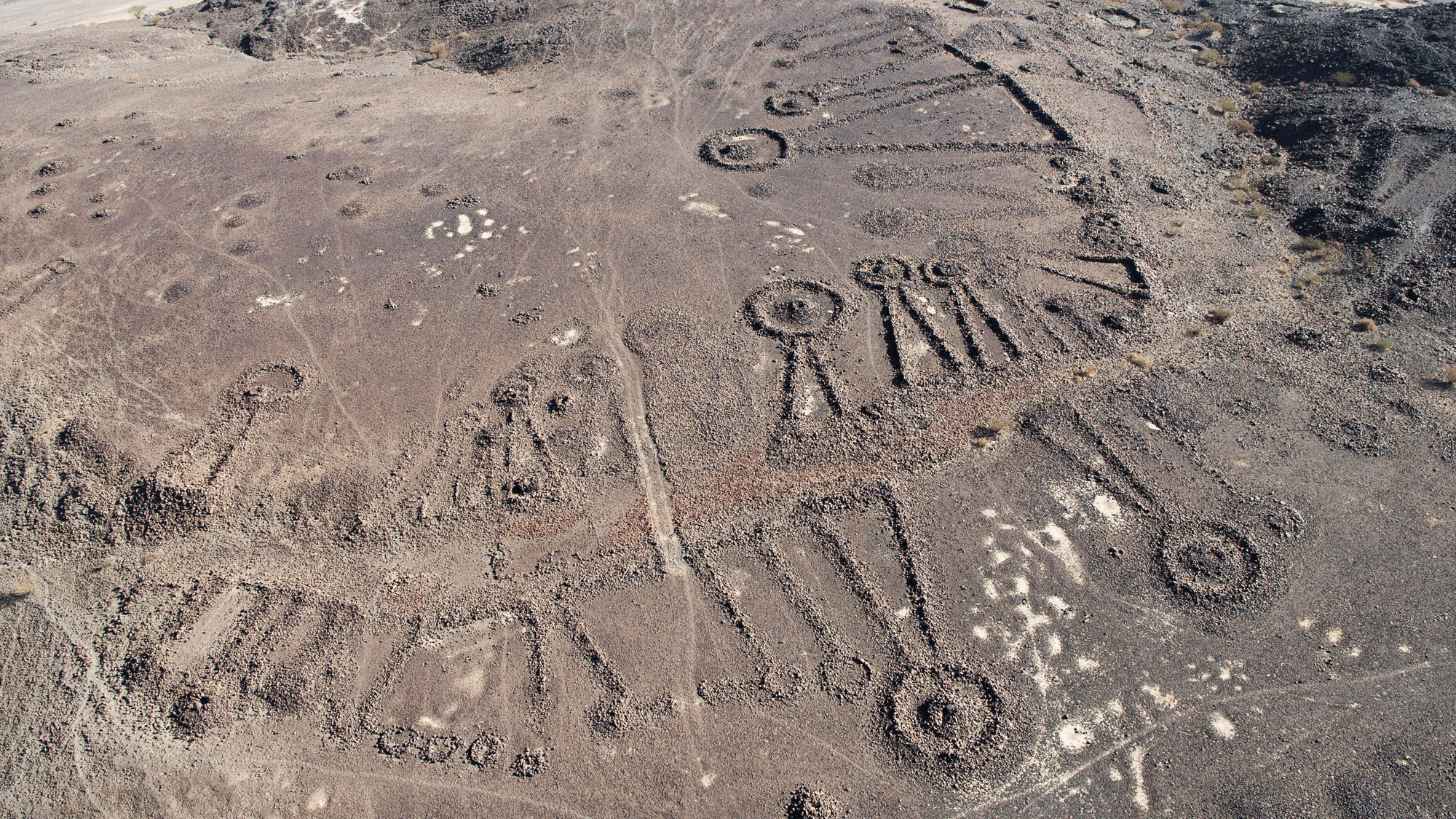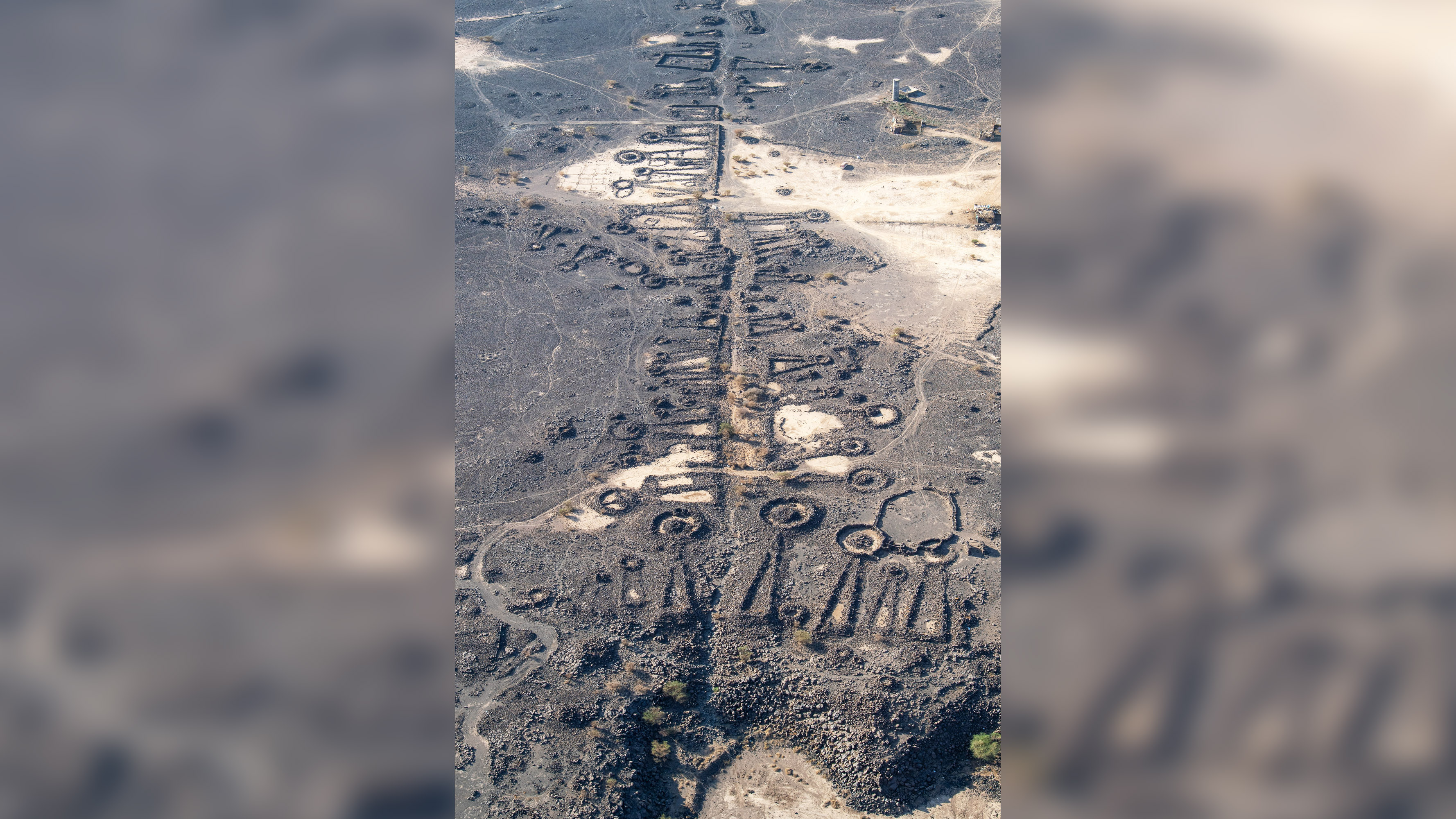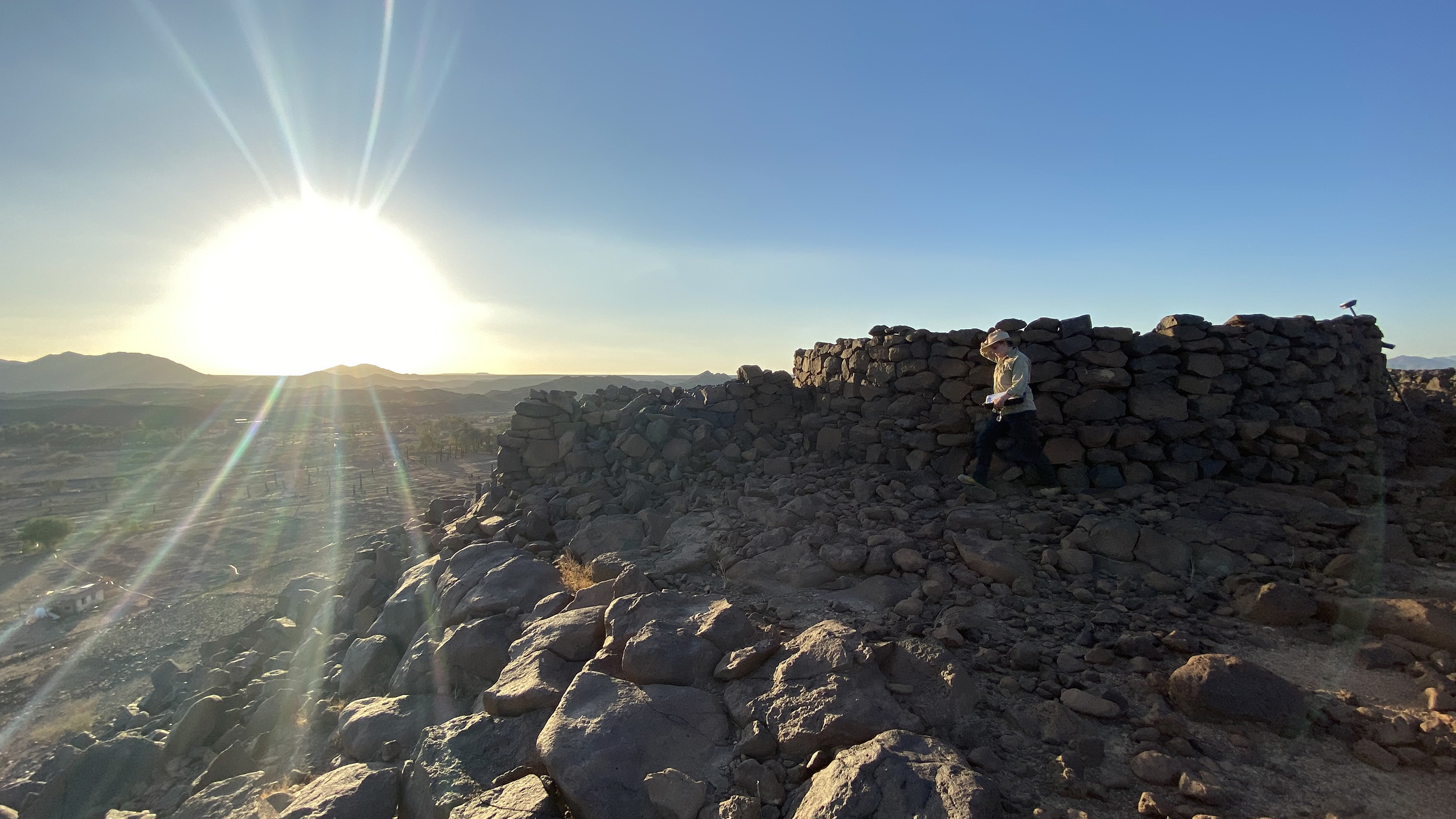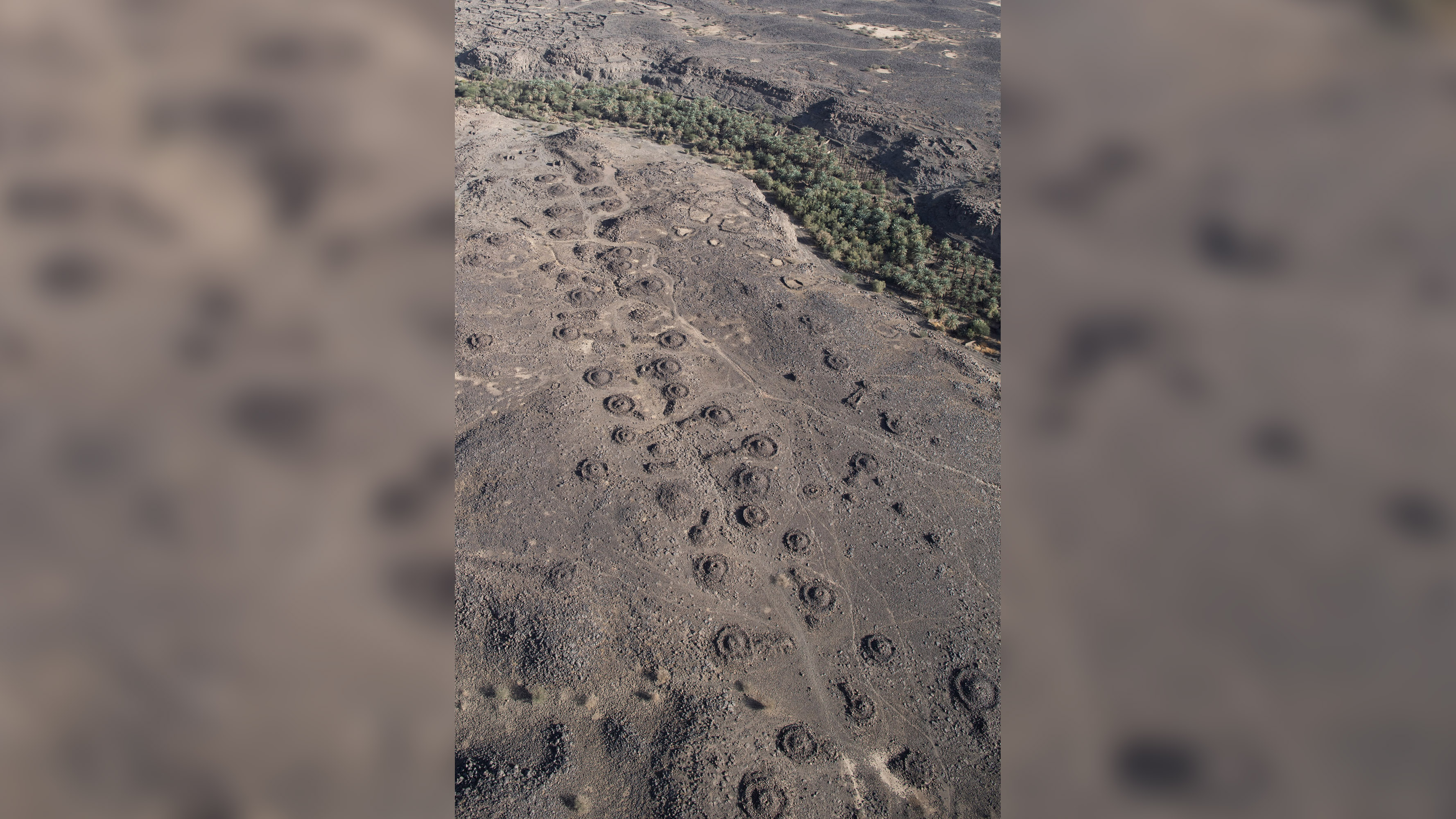Vast 4,500-year-old network of 'funerary avenues' discovered in Saudi Arabia
Thousands of pendant-shaped tombs discovered along the pathways.

Archaeologists in northwest Saudi Arabia have discovered 4,500-year-old "funerary avenues" — the longest running for 105 miles (170 km) — alongside thousands of pendant-shaped stone tombs.
They are called funerary avenues because tombs are located beside them. While funeral processions could have taken place on them this is uncertain. They would have linked oases together and formed an ancient highway network of sorts, the researchers said.
Some of the avenues are delineated with red rock, but most "were simply formed as the ground was worn smooth by the footfall of ancient people — and especially by the hooves of their domestic animals," Mat Dalton, a research associate at the University of Western Australia and lead author of a recent paper on the avenues published in the journal The Holocene, told Live Science in an email.
Related: 5 archaeological 'digs' to watch in 2022
The network of avenues would have facilitated long-distance travel. "By following these networks, people could have traversed a distance of at least 530 km [330 miles] from north to south. There are also hints of such avenues in southern Saudi Arabia and in Yemen. These require further research but could suggest even longer-distance movements by ancient populations," Dalton wrote in the email.




Archaeologists don't know much about the rituals that were conducted on the funerary avenues or even in the tombs that lined the pathways, Dalton said. Human remains inside the tombs are in poor shape, and some of the tombs have been robbed, leaving them bereft of artifacts. Despite the lack of information, "it's not difficult to imagine that the tombs were used to remember or commemorate the dead, especially as the descendants or relations of those buried within them would have probably walked past them frequently during the course of their everyday lives," Dalton said.
"We might even envision funerary processions along avenues from settled oases towards the tombs, but this is purely hypothetical until we find more evidence," Dalton said.
Sign up for the Live Science daily newsletter now
Get the world’s most fascinating discoveries delivered straight to your inbox.
Time of growth
At around the same time that the tombs and avenues were constructed, the Egyptians built the pyramids — including the Great Pyramid of Giza. Meanwhile in Mesopotamia to the north of Arabia, a number of civilizations flourished and built cities and large pyramid-shaped temples known as ziggurats. Despite the flourishing cultures in neighboring Egypt and Mesopotamia, Dalton doesn't think that people in Saudi Arabia were inspired by them to build the funerary avenues and tombs.
"We think that this phenomenon was certainly an indigenous development," Dalton said, noting that people in Saudi Arabia had been building large stone structures for thousands of years before pyramids were built in Egypt. For instance, gate-shaped structures called mustatils were built 7,000 years ago in Arabia and may have been used for a prehistoric cattle cult.
The research team used satellite imagery, aerial photography, ground surveys and excavations to make the finds. The archaeologists involved in the discovery work under the Royal Commission for AlUla, an organization that conducts archaeological study and conservation in the AlUla region of northwest Saudi Arabia. AlUla is a vast area that encompasses 8,711 square miles (22,561 square kilometers) and contains numerous archaeological remains dating across thousands of years.
Originally published on Live Science.

Owen Jarus is a regular contributor to Live Science who writes about archaeology and humans' past. He has also written for The Independent (UK), The Canadian Press (CP) and The Associated Press (AP), among others. Owen has a bachelor of arts degree from the University of Toronto and a journalism degree from Ryerson University.










